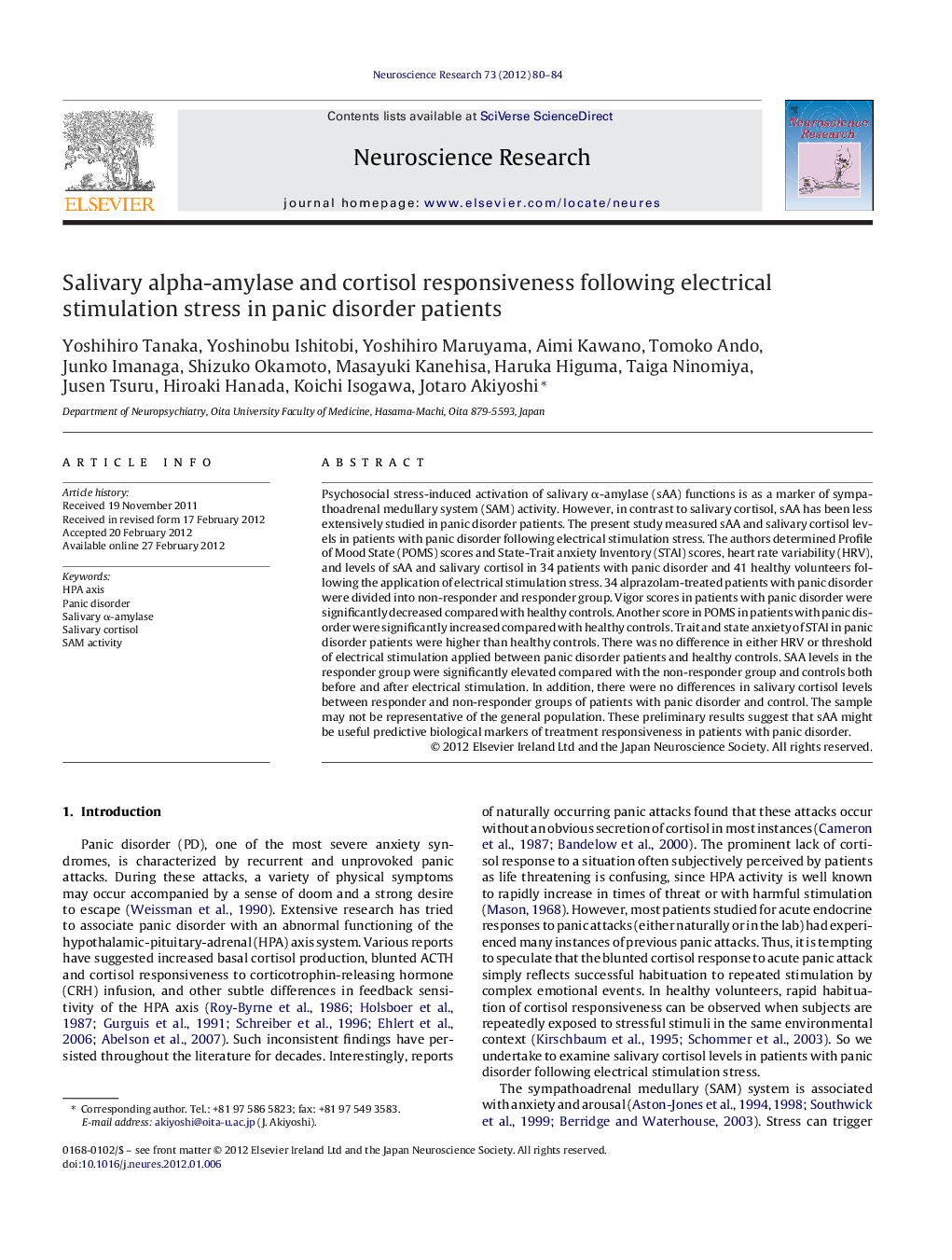| Article ID | Journal | Published Year | Pages | File Type |
|---|---|---|---|---|
| 4351514 | Neuroscience Research | 2012 | 5 Pages |
Psychosocial stress-induced activation of salivary α-amylase (sAA) functions is as a marker of sympathoadrenal medullary system (SAM) activity. However, in contrast to salivary cortisol, sAA has been less extensively studied in panic disorder patients. The present study measured sAA and salivary cortisol levels in patients with panic disorder following electrical stimulation stress. The authors determined Profile of Mood State (POMS) scores and State-Trait anxiety Inventory (STAI) scores, heart rate variability (HRV), and levels of sAA and salivary cortisol in 34 patients with panic disorder and 41 healthy volunteers following the application of electrical stimulation stress. 34 alprazolam-treated patients with panic disorder were divided into non-responder and responder group. Vigor scores in patients with panic disorder were significantly decreased compared with healthy controls. Another score in POMS in patients with panic disorder were significantly increased compared with healthy controls. Trait and state anxiety of STAI in panic disorder patients were higher than healthy controls. There was no difference in either HRV or threshold of electrical stimulation applied between panic disorder patients and healthy controls. SAA levels in the responder group were significantly elevated compared with the non-responder group and controls both before and after electrical stimulation. In addition, there were no differences in salivary cortisol levels between responder and non-responder groups of patients with panic disorder and control. The sample may not be representative of the general population. These preliminary results suggest that sAA might be useful predictive biological markers of treatment responsiveness in patients with panic disorder.
► We examined salivary α-amylase (sAA) and cortisol levels in panic disorder. ► We used the electrical stimulation stress in patients with panic disorder. ► SAA levels were significantly elevated both before and after electrical stimulation. ► These results suggest that sAA might be a useful biological marker of panic disorder.
